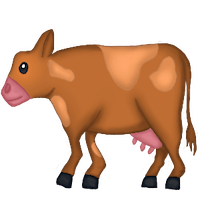A food footprint is comprised of land use, water use, water pollution, and greenhouse gas emissions. In this article, we break down those hidden costs across six major protein sources.
Peanuts are technically legumes, but for clarity we categorise them under Nuts. Legumes include foods like beans, lentils, and peas.
Land use
Half the world's habitable land is used to feed humans. Beef and other grazing animals are highly inefficient converters of land to protein because of the vast area needed for grazing and growing feed crops. Beef requires over 50 times the land per gram of protein as wheat, 30 times more than poultry and nearly 20 times more than legumes.
This is important because clearing more forests to meet future demands could accelerate biodiversity loss, degrade soil health, intensify flood/drought risk, and contribute to climate change through carbon release.
Water use and water pollution
Agriculture is responsible for 70% of freshwater withdrawals and 78% of ocean and freshwater pollution globally. Nuts are particularly thirsty: some almond varieties need about four liters per nut! In water-stressed California, where 80% of the world's almonds are grown, this has significant environmental and economic implications.
Beef is similar, requiring more water than the average person uses for showering in a week per 100g of protein. In contrast, legumes are remarkably water efficient. Eating more water-efficient proteins is important because water-intensive agriculture intensifies drought, diminishes healthy rivers and lakes, and pollutes crucial waterways through fertilizer and pesticide runoff.
Greenhouse gas emissions
Agriculture accounts for a 26% of global greenhouse gas emissions. Methane, with roughly 80 times the global warming potential of CO2 over a 20-year period, underscores the climate challenges posed by ruminant animals – methane-burpers like cattle and sheep.
What we eat is more important than where it's from. Emissions from transport, processing, and packaging are often dwarfed by deforestation driven by agriculture, fertilizer use, methane emissions, and food waste. Across most foods – both plant and animal – these factors typically account for over 50% of total supply-chain emissions.1
Conclusion
Legumes and whole wheat are efficient protein sources, boasting low emissions, water use, and land requirements. Nuts, despite their water needs, are almost carbon-neutral. The disparity of pork and poultry compared to beef is vast – the decision of which animal proteins you choose to eat is critical.





